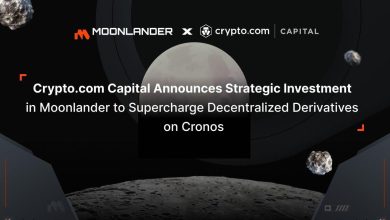Polychain CEO Discusses Memecoins and Tokenized Social Media Future


At the Token2049 conference in, Polychain Capital CEO Olaf Carlson-Wee delivered a striking keynote titled “Meme Coins are Information Markets”. In this keynote, he dissected both the speculative nature of and a visionary proposal to social media content.
Memecoins: Divergent Views of Institutions vs. Retail
Carlson-Wee emphasized a sharp divide in outlooks between institutional and retail investors. He asserted that institutions regard memecoins mostly as speculative “gambling tools,” volatile, short-term assets with little regard to underlying fundamentals. By contrast, view memecoins as social signals: viral, meme-driven, community-oriented tokens where value is derived from collective excitement and cultural meme power.
In Carlson-Wee’s framing, memecoins function as information market instruments through which communities express beliefs, humor, or cultural narratives. Their price dynamics often respond less to conventional metrics and more to momentum, social attention, and sentiment.
Tokenizing Social Media: A New Monetization Paradigm
Moving beyond memecoins, Carlson-Wee proposed a more radical future: minting social media posts and accounts as tradable tokens. In his vision, platforms would move away from ad-driven monetization, replacing it with market-based incentives where creators and communities profit directly from virality.
Under this model:
- Each post could be minted as a token; users who reshare or elevate the content might earn yield.
- Accounts themselves become tradable, with transaction fees or distribution of profits tied to engagement and reputation.
- Algorithmic ranking (based on opaque signals) could be supplanted by market dynamics: the more valuable (by demand) content surfaces.
Carlson-Wee argued that such a shift would convert passive social media audiences into active trading communities where attention, influence, and creativity become quantifiable and economically rewarded.
Broader Context and Implications
Carlson-Wee’s ideas mirror a broader trend: the increasing fusion of culture, community, and finance in spaces. Academic work has shown how memecoins are often shaped by memes, humor, and social interaction patterns rather than fundamental valuations. Meanwhile, social media’s role in driving and hype is well documented: tweets, likes, and shares can materially influence on-chain value.
However, numerous challenges loom. Tokenizing social content raises questions around ownership, moderation, fraud, speculation, and inequality. Who governs the economic rules? How to curb misuse (e.g., hype pumps, spam)? The tension between creativity and extractive financialization will be hard to balance.
But Olaf Carlson-Wee’s address offers a bold blueprint: if memes and social dynamics already drive value in crypto, why not build social systems that align incentives, reward virality, and let communities share in the upside directly? As the Web3 era evolves, blending social culture with token economics may be one of the most transformative frontiers ahead.







